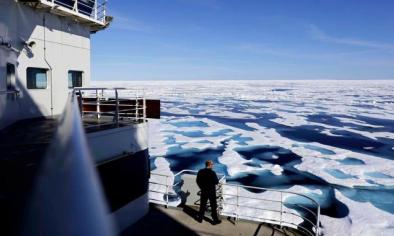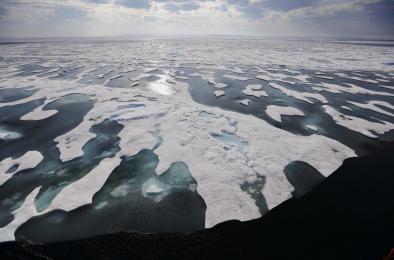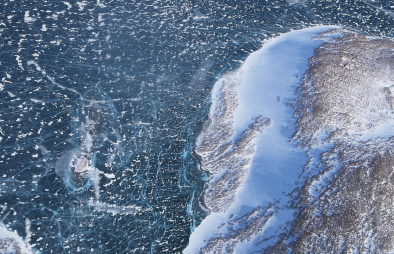Science Source
Sea ice, rain-on-snow and tundra reindeer nomadism in Arctic Russia
In a normal year, crusted snow patches are common, but herds can be relatively easily led to nearby areas with softer snow," says Research Professor Bruce Forbes from the Arctic Centre at the University of Lapland.
The reason the 2013 event was so catastrophic was that heavy rains saturated much of the snow cover from top to bottom, so when air temperatures plummeted the pastures were frozen beneath a thick, heavy layer of ice. This left animals locked completely out of pastures across the entire southern Yamal Peninsula, an area covering some 27 000 km2.
Bruce Forbes, lead author and Research Professor from the Arctic Centre at the University of Lapland
- States that sea ice loss is accelerating in the Barents and Kara Seas (BKS)
- States it is a pressing task to assess the potential linkages between sea ice retreat/thinning and the region's ancient and unique social–ecological systems
- States that tundra nomadism remains a vitally important livelihood for indigenous Nenets and their large reindeer herds
- States warming summer air temperatures have been linked to more frequent and sustained summer high-pressure systems over West Siberia, Russia, but not to sea ice retreat
- States autumn/winter rain-on-snow (ROS) events have become more frequent and intense
- Reviews evidence for autumn atmospheric warming and precipitation increases over Arctic coastal lands in proximity to ice loss in the Barents and Kara Seas
- Finds that two major rain-on-snow events during November 2006 and 2013 led to massive winter reindeer mortality episodes on the Yamal Peninsula
- Fieldwork with migratory herders reveals that the ecological and socio-economic impacts from the catastrophic 2013 event will unfold for years to come
- Results suggest that autumn atmospheric warming (the suggested link between sea ice loss, more frequent and intense ROS events and high reindeer mortality) has serious implications for the future of tundra Nenets nomadism
Related Content
Science Source
| Bulletin of the American Meteorological Society
More-Persistent Weak Stratospheric Polar Vortex States Linked to Cold Extremes
Marlene Kretschmer, Dim Coumou, Laurie Agel et al
Headline

Jul 31, 2017 | PBS NewsHour
Arctic journey shows the glaring effects of climate change
Headline

Jul 28, 2017 | Washington Post
How loss of Arctic sea ice further fuels global warming
Headline

Jul 17, 2017 | Bloomberg
How a Melting Arctic Changes Everything: Part I


